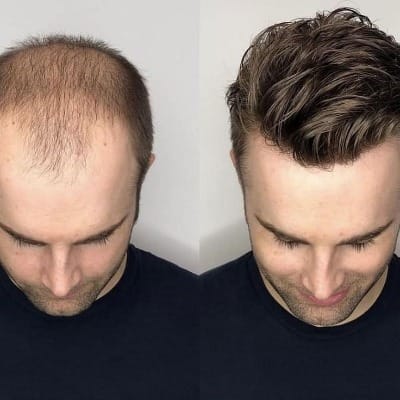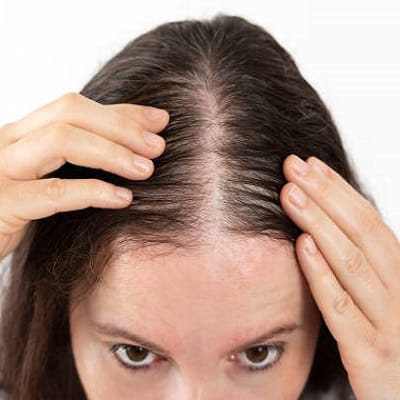
Have you ever wondered whether wigs could affect the growth of your natural hair? Most people ask this question, especially those who enjoy different hair styling. The notion of how healthy wigs affect hair growth and their versatility is, therefore, essential.
The main thing is how you take care of your hair when you wear wigs. Traction Alopecia, which usually results from more tension on hair follicles, may develop if wigs are too tight or worn for a long time without directing the air to the scalp. Furthermore, glue or adhesives can be used to secure the wig, which can damage your hair and also cause scalp irritation.
However, when worn correctly and with diligent care, wigs can serve as a protective style that enhances the appearance of natural hair. Opting for breathable materials, taking breaks from wig-wearing, and adhering to a suitable hair care routine all contribute to healthy hair growth and the enjoyment of wig styling.
What are the Hair Growth Cycles?
The hair growth cycle consists of three main phases: anagen, catagen, and telogen.
The anagen phase can take several years. In this phase, the hair growth process starts at the base of the follicle. During this phase, the hair growth cycle is the longest, and most of the strands experience it at once.
Then, the catagen stage, which is a transition phenomenon either as a catabolism or anabolism stage and lasts for about four weeks, will be considered. Consequently, the growth of the hair slacks and the diameter of the hair follicle decreases.
Ultimately, we have the last phase—telogen—which is a resting phase lasting several months. Then, the hair keeps sitting under the follicle until, eventually, it starts losing off to let the new hair stand up.
Factors Influencing Hair Growth:
Hair growth is influenced by various factors that can impact the rate and quality of hair growth:
Genetics and Hereditary Factors: Your genetic composition has a principal effect on controlling your pattern of hair growth. Straight, curly, or kinky, coily hair can be inherited from family members. But this also includes susceptibility to hair loss.
Hormonal Influences: The concentration of hormones over processes like puberty, pregnancy and menopause stimulate and support the hair growth. Hormone imbalances, including increased DHT levels, can potentially lead to hair thinning and fall.
Environmental Factors: Environmental disturbances such as pollution, UV radiation, and extreme weather can only be dealt with poorly, and hair is likely to become fragile. Additionally, psychological stress may disrupt the natural hair growth cycle, causing more hair to shed or not grow well.
Does Wig Stop Hair Growth?
A lot of false notions are found within the influence of wigs on the growth of hair, which is as follows- Firstly, donning wigs does not necessarily both slow and stop (mitigate and hinder) hair growth. On the other hand, wrong adjustments or low-quality wigs can harm your hair roots with time.
Although many people believe that wigs damage hair when properly put on and maintained, they can be a protective style. Wigs eventually encourage hair growth. They ensure that hair remains strong and healthy by protecting it from styling elements such as heat and manipulation, thereby minimizing damage risks from breakage or split ends.
Lace-front wigs, full lace wigs, and synthetic wigs all have different consequences and impacts on natural hair. Lace-front wigs like these give the appearance of a more natural hairline but may involve glue application that might cause traction alopecia if not applied properly. Full-lace wigs, on the other hand, have replaceability and breathability issues, but they cost more.
Common Misconceptions About Wigs:
Many people believe that donning wigs is bound to result in hair loss. However, you must distinguish between short-term hair loss and permanent damage. Usually, temporary hair loss is a result of factors like hair being pulled and forced tightly in hairstyling styles, which is the wrong way of installing a wig. Unlike many others, this type of hair loss, traction alopecia, that results from the tension placed on the hair can be easily prevented by removing the source of tension.
On the contrary, permanent damage to hair follicles occurs when they are totally damaged, causing thinning or baldness. Wigs do not cause baldness because a good wig does not aggravate hair loss problems.
In fact, many research reports confirm that wigs shield the scalp and natural hair from environmental influences, thereby encouraging healthy hair growth.
Book a Consultation:
Enfield Royal Clinic’s expert cosmetologists can help clients with personalized advice about the wigs on the market and how to maintain a healthy head of hair. Whether you wear wigs for fashion or health reasons, it is most efficient for you to be consulted to be sure of the best solutions and support. Call us today or fill out the form to arrange your appointments and embark on your way to thick and shiny hair.




